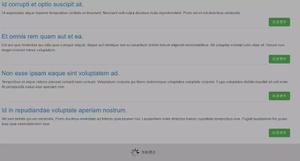java UDP通信客户端与服务器端实例分析
本文实例讲述了java UDP通信客户端与服务器端。分享给大家供大家参考,具体如下:
最初Udp是以字节为单位进行传输的,所以有很大的限制
服务器端:
import java.net.*;
public class TestUdpServer {
public static void main(String[] args) throws Exception {
byte[] buf = new byte[1024];
DatagramPacket dp = new DatagramPacket(buf,buf.length);
// try {
DatagramSocket ds = new DatagramSocket(2345);
while(true) {
ds.receive(dp);
System.out.println(new String(buf,0,dp.getLength()));
// }
// } catch (Exception e) {
// e.printStackTrace();
}
}
}
用户端:
import java.net.*;
public class TestUdpClient {
public static void main(String[] args) throws Exception {
byte[] buf = new byte[1024];
buf = (new String("hello")).getBytes();
DatagramPacket dp = new DatagramPacket(buf,buf.length,new InetSocketAddress("127.0.0.1",2345));
// try {
DatagramSocket ds = new DatagramSocket(5679);
ds.send(dp);
ds.close();
// } catch (Exception e) {
// e.printStackTrace();
// }
}
}
注:由于必须以字节为单位进行传输,Udp的传输用了一个容器类的东西,用来接收字节
先建一个字节数组,然后以这个数组创建容器。用来传输数据。
实例:传输一个Long类型的数据
服务器端:
import java.io.*;
import java.net.*;
public class UdpServer {
public static void main(String[] args) throws Exception {
byte[] buf = new byte[1024];
DatagramPacket dp = new DatagramPacket(buf,buf.length);
DatagramSocket ds = new DatagramSocket(2345);
while(true) {
ByteArrayInputStream is = new ByteArrayInputStream(buf);
DataInputStream dis = new DataInputStream(is);
ds.receive(dp);
System.out.println(dis.readLong());
}
}
}
用户端:
import java.io.*;
import java.net.*;
public class UdpClient {
public static void main(String[] args) throws Exception {
Long n = 10000L;
ByteArrayOutputStream os = new ByteArrayOutputStream();
DataOutputStream dos = new DataOutputStream(os);
dos.writeLong(n);
byte[] buf = new byte[1024];
buf = os.toByteArray();
System.out.println(buf.length);
DatagramPacket dp = new DatagramPacket(buf,buf.length,
new InetSocketAddress("127.0.0.1",2345));
DatagramSocket ds = new DatagramSocket(5679);
ds.send(dp);
ds.close();
}
}
注:由于Udp是以字节为单位进行传输的,所以要用到ByteArray的输入和输出流用来进行数据的转换。
另外,相较于Output流,Input流在构建的时候需要一个数组作为参数,用来存放数据。
在基本的Udp传输的基础上,代码分为两部分,一部分是把传输或接受的Long类型数据转换为byte类型的数据,然后是基本的数据传输。
另一方面,直接的字节流不能转换为Long类型,同理,刚接收的数据是字节类型,直接打印(System.out.println)是以字符串类型输出的,都需要通过Data的数据流进行转换。
更多关于java相关内容感兴趣的读者可查看本站专题:《Java Socket编程技巧总结》、《Java文件与目录操作技巧汇总》、《Java数据结构与算法教程》、《Java操作DOM节点技巧总结》和《Java缓存操作技巧汇总》
希望本文所述对大家java程序设计有所帮助。
以上是 java UDP通信客户端与服务器端实例分析 的全部内容, 来源链接: utcz.com/z/355237.html








